Riga is the capital of Latvia and one of the most charming cities in the Baltic Region. With its medieval buildings, Art Nouveau architecture, vibrant culture and delicious cuisine, Riga exceeded my expectations. In this guide, I will cover top things to do in Riga for a pleasant vacation. At the end of the article, I will share a two-day itinerary for Riga. I hope you will enjoy it as much as I did.

Things To Do in Riga
For accommodation options in Riga, you can check here.
Vecriga: Riga Old Town, the historical center, has a history of more than 800 years and is listed as a World Heritage Site by UNESCO. Most of the sights are usually located in and around here.
Rīgas Doms: Built in 1211, Riga Cathedral is the largest medieval church in the Baltic region and features a mix of Gothic, Romanesque and Baroque architecture.
Rigas Centraltirgus: Built in 1930, Riga Central Market is the largest market in Europe. It consists of large old Zeppelin hangars, each selling different types of products. As you wander through the sections, you can see a wide variety of meats, cheeses, vegetables, fruits and other Baltic foods. I went there because I like to visit local markets, and I was going to take the bus to Tallinn right across the street.
Zviedru Varti: Built in 1698, the Swedish Gate is the only surviving gate of the Riga city walls. Just behind the walls are some of the original medieval streets, the most popular of which is Troksnu iela, a very photogenic and cute street.
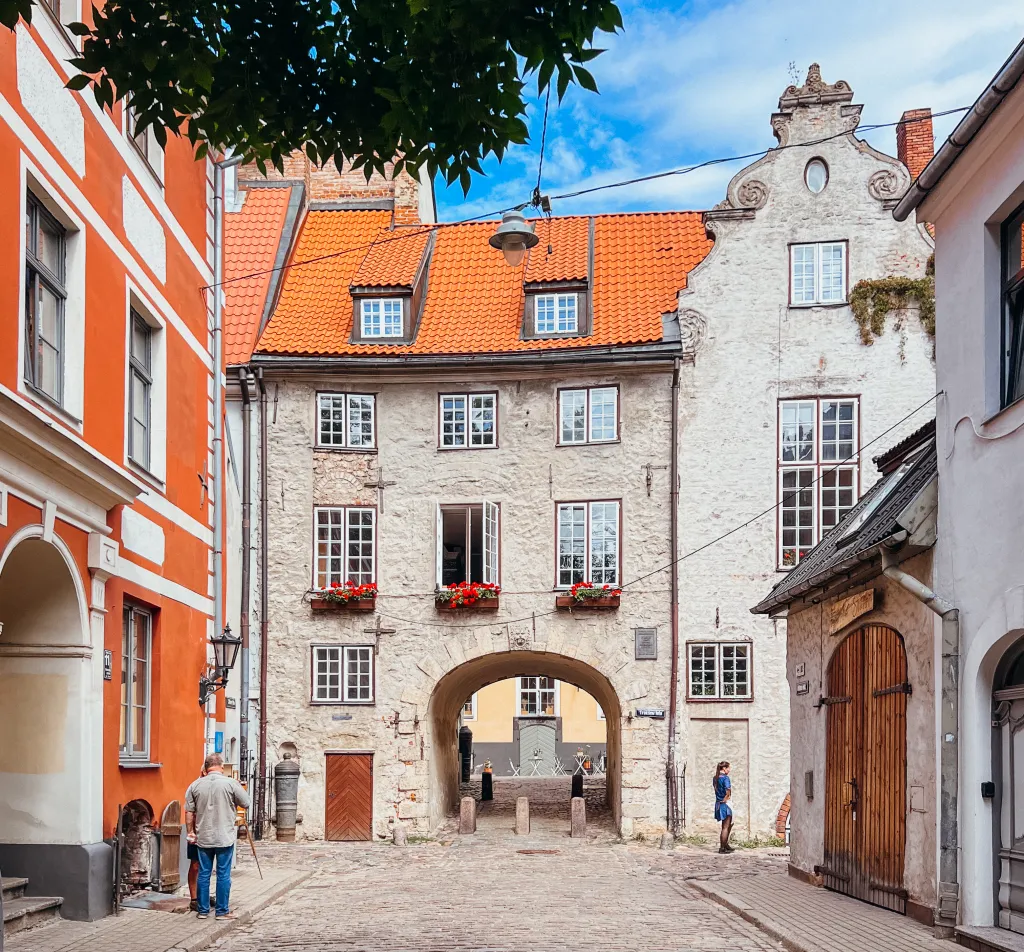
Latvijas Nacionalais Vestures muzejs: The Latvian National History Museum features a large collection about Latvia’s history and culture. There are a number of exhibitions presenting the country’s past in chronological order. You can visit here if you want to learn about Latvia’s history in depth.
Latvijas Nacionalais Makslas Muzejs: Founded in 1869, the Latvian National Museum of Art is the largest and most important art museum in Latvia. It exhibits a wide range of artworks from traditional Latvian art to international modern art.
Tris brali: These houses, called the Three Brothers, are among the oldest architectural examples in Latvia and represent architectural styles from different periods. The oldest building at number 17 was built at the end of the 15th century and shows Gothic architectural features; it was once used as a merchant’s house. The second building, at number 19, was built in the mid-17th century and has Dutch Renaissance influences; it is known that craftsmen once lived here. The newest building at number 21 was built in the late 17th century. These houses are now home to the Museum of Latvian Architecture, which you can enter for free.

Latvijas Nacionala biblioteka: Known as the Castle of Light, this is the building of the National Library of Latvia. As a remarkable example of modern architecture, I can easily define it as one of the landmarks of Riga. You can enter the library from outside, it costs 1€.
Bastejkalna Park: I left my heart in this park, located in the center of the city, next to the historic old city walls. The park stretches along the Daugava River and there are cute bridges over the river. There were boats crossing the river, ducks by the water, groups singing, young people having fun together, etc. There was such a lively and lovely atmosphere here.
Vermanes Garden: Founded in the 19th century, this is the second oldest park in Riga. With its colorful flower gardens, walking paths and children’s playgrounds, Vermanes Garden is a place I would recommend especially for families with children.

Latvijas Nacionala Opera un Balets: Built in 1893 and opened in 1913, the Latvian National Opera and Ballet Theater is one of the most important cultural institutions in Latvia. The building itself and the main hall look very beautiful. If you are lucky enough, I recommend you to go to a show here. You can check if there is a show in the time period you are visiting, and you can buy tickets at opera.lv.
Brivibas piemineklis: The Freedom Monument, one of the symbols of Latvia, was designed by sculptor Karlis Zale for those who died in the struggle for independence. The 140-meter-high monument features figures and reliefs depicting heroes and the Latvian people. At the top, the statue of Freedom, known as Milda, is topped by three stars representing the three major regions of Latvia: Kurzeme, Vidzeme and Latgale.
Pulvertornis: Built in the 1330s to protect the city of Riga from enemy attacks, the Gunpowder Tower takes its name from the fact that gunpowder was stored in it in later years. The tower, which is 26 meters high and 3 meters thick, now houses part of the Latvian War Museum. The museum has artifacts and exhibitions on Latvia’s military history and the struggle for independence.
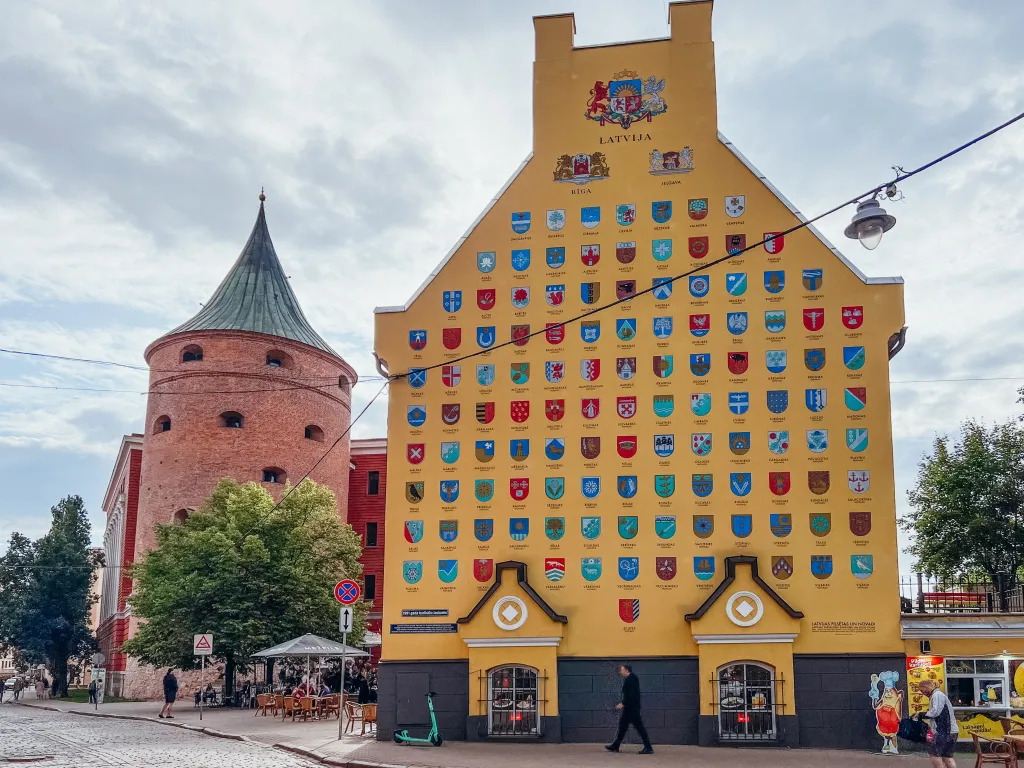
Ratslaukums: Town Hall Square in Riga Old Town. This was the epicenter of Riga’s commercial activities during the Hanseatic League period. House of the Blackheads, one of the city’s landmarks, is also located here.
Melngalvju Namu Nams: Originally built in the 14th century to house the Blackheads guild, the Gothic-Dutch Renaissance building “House of the Blackheads” is now a museum.
Sveta Petera baznica: The 13th-century St. Peter’s Church is the tallest building in Riga and its tower offers great panoramic views of the city. It costs 9€ to climb the tower. I wouldn’t say it’s a must if you think the fee is too much, but I think the view is really nice.
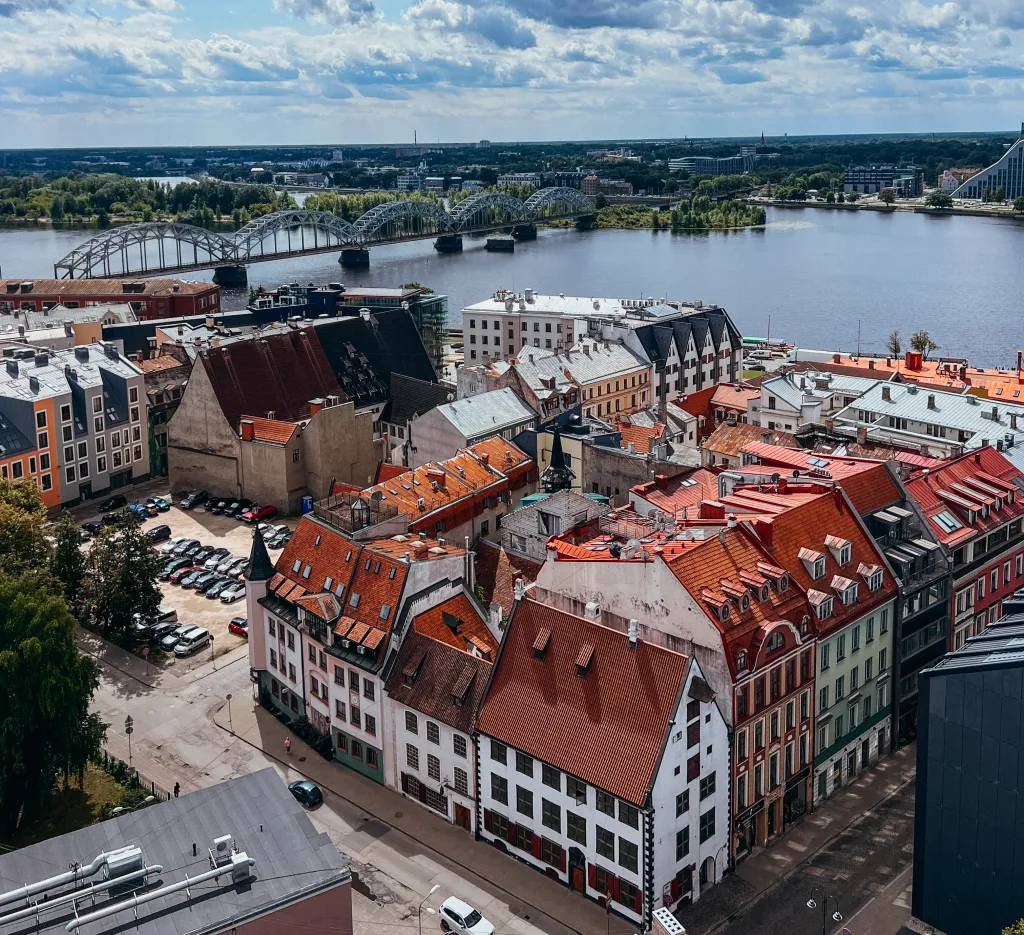
Rīgas geto un Latvijas holokausta muzejs: The Riga Ghetto and Latvian Holocaust Museum commemorates the victims of the Holocaust in Nazi-occupied Latvia during World War II and tells the history of the Jewish ghettos in Latvia. Those interested in this period can visit.
Brivdabas Etnografiskais Muzejs: Founded in 1969, the Latvian Ethnographic Open Air Museum is spread over an area of 87 hectares. It houses more than 400 historical buildings and structures dating from the 17th to the 20th century.
Livu laukums: Dating back to the 13th century, Livu Square is the most vibrant and colorful square in the city. The square is surrounded by cafes with gardens and in the center are beautiful flower gardens designed in the shape of waves to remind you of the lost river from which Riga was once named. An ice rink is also set up in the winter months.
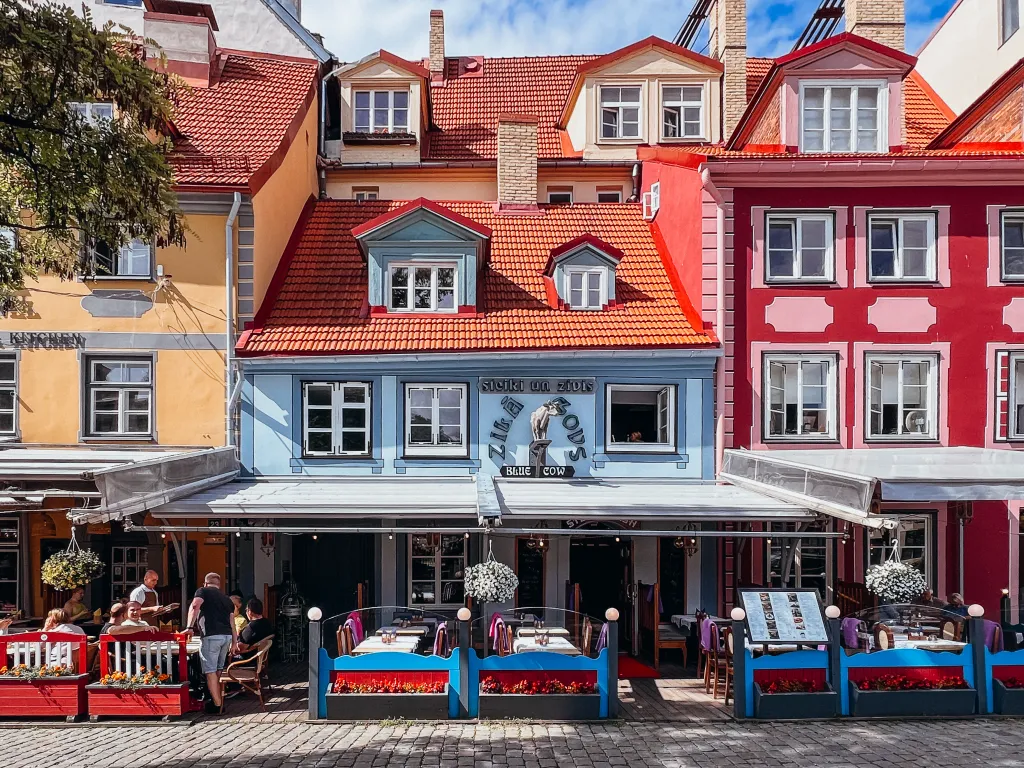
Stura Maja: Corner House is a building that has witnessed one of Riga’s darkest histories. Used as the headquarters of the KGB during the Soviet era, it was a place where dissidents and political prisoners were brought, tortured and interrogated. If you are interested, you can join guided tours. The museum exhibits documents, photographs and personal belongings from the period. You can also see the interrogation rooms and cells.
Alberta Iela: Riga has the highest concentration of Art Nouveau architecture in Europe. There are more than 800 Art Nouveau buildings throughout the city, but the biggest concentration is in this area, where most of the buildings were built by architect Mikhail Eisenstein. I think it is a visual feast for architecture enthusiasts, I love it and I always visit such neighborhoods in the cities I visit.
Rigas Kristus Piedzimsanas cathedral: Nativity of Christ Orthodox Cathedral, built during the reign of Russian Emperor Alexander III. Located in the Esplanade park, it is a typical Neo-Byzantine style building.
Apart from these, there are some sculptures that have become symbols in the city, and I would like to mention them. Lielais Kristaps – “Kristaps the Great” statue, Bremenes muzikanti – Bremen Musicians Statue, Kaku nams – Black Cat Building can be counted among the tourist activities to do in the city.
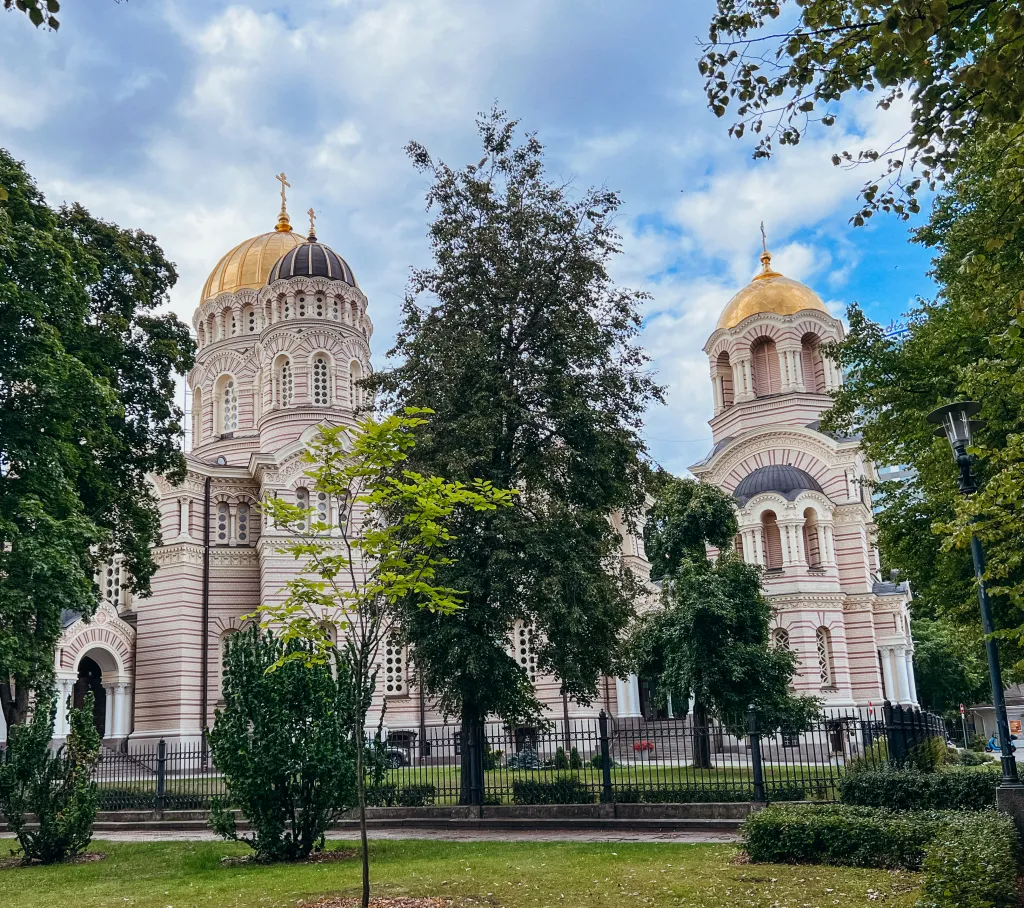
2 Day Riga Travel Itinerary
For those who are going to Riga for the first time, I have prepared a day by day itinerary. I have not included all the places I mentioned above in the itinerary, you need more time to go to all the museums, but you can choose and go to some of them. You can add the ones that interest you to your itinerary.
Riga Travel Itinerary Day 1
Art Nouveau street, Corner House, Nativity of Christ Orthodox Cathedral, Vermanes Garden, Statue of Liberty, Bastejkalna Park, Gunpowder Fortress, Swedish Gate, Livu Square, Black Cat Building
Riga Travel Itinerary Day 2
Three Brothers, Kristaps the Great, Riga Cathedral, Bremen Musicians, St. Peter’s Church, House of Black Heads, Riga Central Market, National Library of Latvia
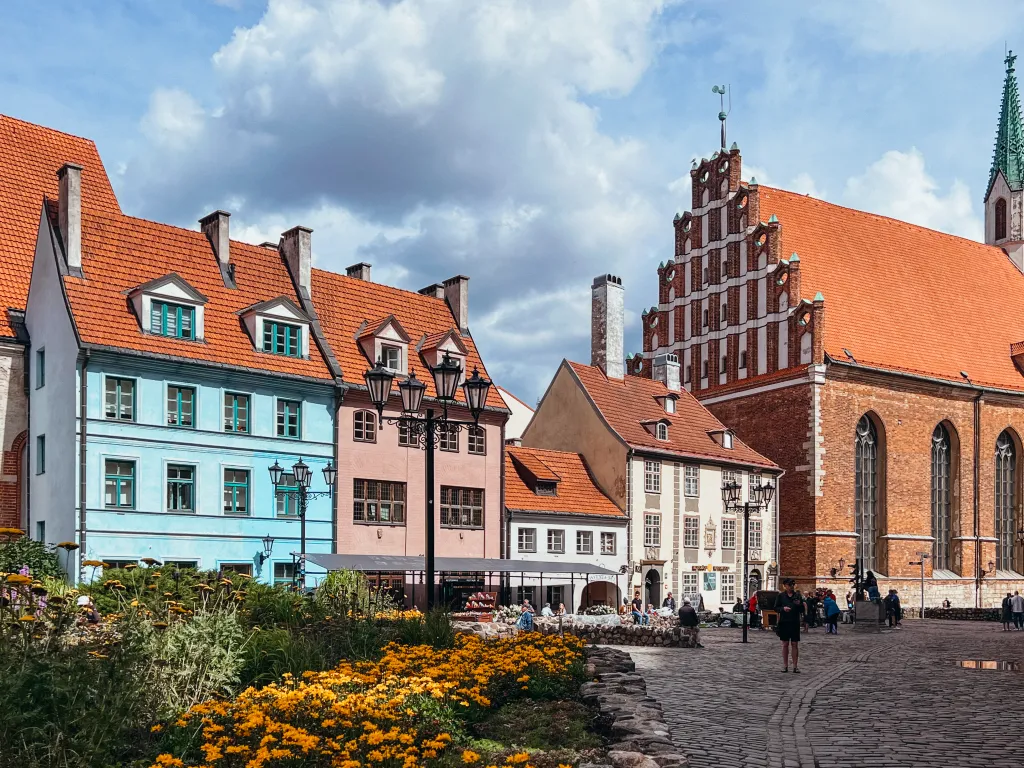
I hope my Riga Things to Do guide will be useful for you. If you have any questions, please leave them in the comments. If you have any suggestions, I also welcome them in the comments.
Don’t forget to follow me for more photos and to be informed about my future posts!
Instagram: lifetime.journey
Tiktok: ihdcnwbcmw.com
Facebook: ihdcnwbcmw.com
Discover more from LIFETIME JOURNEY
Subscribe to get the latest posts sent to your email.